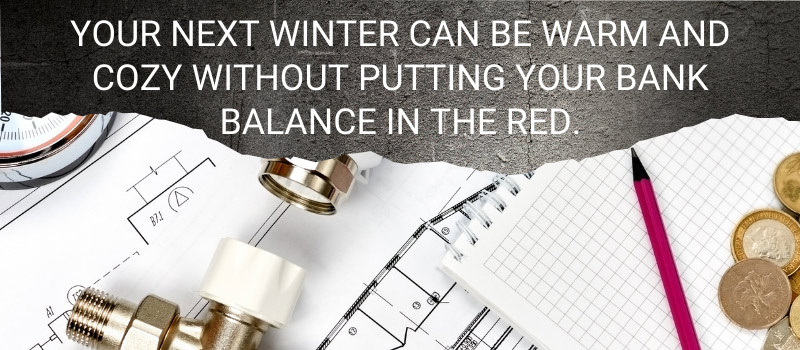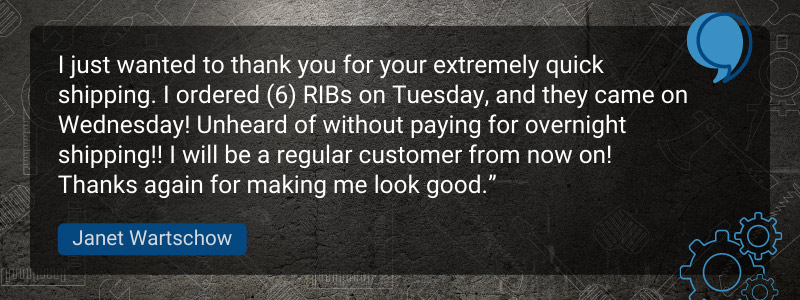Written by Industrial Stores Staff 09/12/2021
On a freezing winter day, nothing matters more than a warm and cozy space.
While you want your home or office to have the ideal temperatures to stop you from freezing to death, it comes with a price. Extra heating for your space can come at a cost that will put a significant dent in your budget.
It would be great to save a little extra on power bills. But, how can you do this during winter with all the added heating you need to keep you going?
Thankfully, with some targeted efforts, you can bring down your energy bill.
To significantly lower your heating costs, you should start by understanding how much heat your household consumes, and then decide on affordable solutions that meet your needs.
Some of the factors that contribute to increased power consumption through heating include:
For starters, if you’re using an older HVAC system, it’s less likely to be as energy-efficient as a newer system which may be the cause of an outrageous energy bill.
Also, if your system has a lower energy rating, it could be drawing too much power. Your heating system’s efficiency is shown by the Annual Fuel Utilization Efficiency AFUE ratings.
The higher the AFUE rating, the more efficient the system. The recommended AFUE ratings for efficiency are marked at 70% or higher.
Note: AFUE measures the amount of heat produced per volume of fuel consumed per year.
Another factor that contributes to your power consumption is the design of your house. A well-insulated home will lose less heat and reduce the need for added heating from appliances that use energy.
Gaps between your doors and windows are another sure way of heat loss in your home and contribute to more dollars spent on heating.
Setting your thermostat to maintain a specific temperature throughout the day will also result in high consumption. For example, when there is no one at home or when you are asleep, there is no need to maintain high temperatures.
Now that we know some of the most common causes of increased energy consumption, let’s consider solutions to keeping you warm while keeping your budget in check.
When your heating system is in prime condition, it works efficiently, which will keep your home heated up and save you costs. A fully functioning system will use less fuel for heating, which equates to a reduced power bill.
To ensure that your Heating, Ventilation, and Air Conditioning (HVAC) works efficiently through the winter and beyond, agreeing on a service plan with a reputable service contractor is ideal.
A regular maintenance plan for your system will also help you pick up on parts that need replacement before it becomes a big problem.
Expert Tip: Get a service contractor who is informed about high-quality service kits that will keep your heating system running perfectly for longer.
The less heat your house loses, the less heating you need, the more money you save on energy.
Your house loses the most heat through the following:
You, therefore, have to think of ways to insulate these heat-escape points.
Depending on your preference and the site you wish to insulate, there are various options for every home style. The insulators work because they are made of materials that are poor thermal conductors. They will therefore prevent heat loss through the escape points.
The following are some heat insulation options:
Take advantage of technological advancements and upgrade your home with a sophisticated smart thermostat. This device ‘learns’ your heating preferences and adjusts them automatically.
Your temperature settings will automatically adjust when you are at home or when it’s bedtime, so you don’t forget to lower the temperature accordingly.
The thermostat can also use sensors in your home to identify cold spots to target your heating needs more effectively.
Smart thermostats come with the following features:
The table below shows some of the main considerations for choosing a smart thermostat.
An outdated heating system is likely to cost you more than you bargained for. The older your HVAC is, the less efficient it becomes. It will therefore consume more energy to keep you warmed up during those chilly times and add to your energy bill.
Although replacement comes with a significant upfront cost, it’s a worthwhile investment because it will lower your bills in the long run. Plus, it’s an upgrade to your home.
Invest in a heating system with high-energy efficiency to save more. A standard-efficiency heating system converts 80% or less of available power for heating, while a high-energy one can convert up to 97%. This means you’ll need less energy for heating.
You can also consider installing an air booster, also known as an axial fan. You can use it for houses with central air units.
You install the air ducts for additional airflow, which balances out room temperature and improves the efficiency of your HVAC.
Before putting in a new system or upgrading your temperature control system, consult with qualified technicians. You’ll need professional guidance to choose the correct specifications of equipment suitable for your home.
Using a humidifier can save your energy bill because it moistens the air. When the air is humid, it feels warmer compared to dry air. This is because sweat evaporates more slowly when the air is moist, trapping heat on your body for longer, making you feel warmer.
Since the air will be warmer, you won’t need to turn up the temperature of your heating system too high, which will save you energy and keep your power bill under control.
Choose from different options of humidifiers such as:
Your choice of humidifier will depend on the type and condition of your windows and doors. Larger windows tend to allow more air in which makes the room colder.
To get the right humidifier for your home, consult a knowledgeable contractor who will assess your needs and advise you accordingly.
Humidifiers come in different sizes, which show how many gallons of water they can process per day. The larger your home, the greater the processing power you need.
To select the correct size, measure your home’s floor area and choose a corresponding volume. For instance:
Your heating and ventilation systems need to be fully serviced when the seasons change. You should have one service for your air conditioning at the beginning of the winter season and another for your heating system just before fall.
Seasonal maintenance will keep your HVAC systems running smoothly to save your energy bill.
You should change your heating and ventilation system’s air filters regularly. Depending on how often you use it, you may need to change it monthly or quarterly. Changing your filters is critical because it will affect how your HVAC system works.
In addition, you need new filters to keep your indoor air clean so that external pollutants, such as dust and mildew, don’t keep circulating inside your house.
A programmable thermostat will help you take control of your energy use. It automatically adjusts to your heating and cooling needs, so you don’t waste energy.

Your next winter can be warm and cozy without putting your bank balance in the red. Turn to Industrial Stores for all your heating and air conditioning systems at affordable prices.
You’ll find a wide range of heating solutions for any project. Whether you are a contractor, business owner, or DIYer looking to upgrade your home, we offer tailored solutions to get your premises sufficiently heated for the winter ahead.
Our team of highly qualified technicians will readily work with you and guide you through completing your project.
All our products come from tried and tested manufacturers. Plus, we offer free shipping on eligible products.

Share on Facebook: